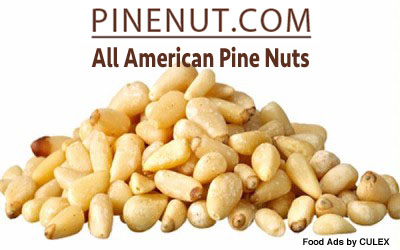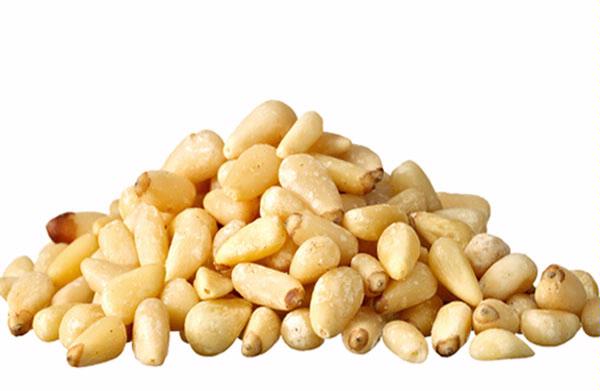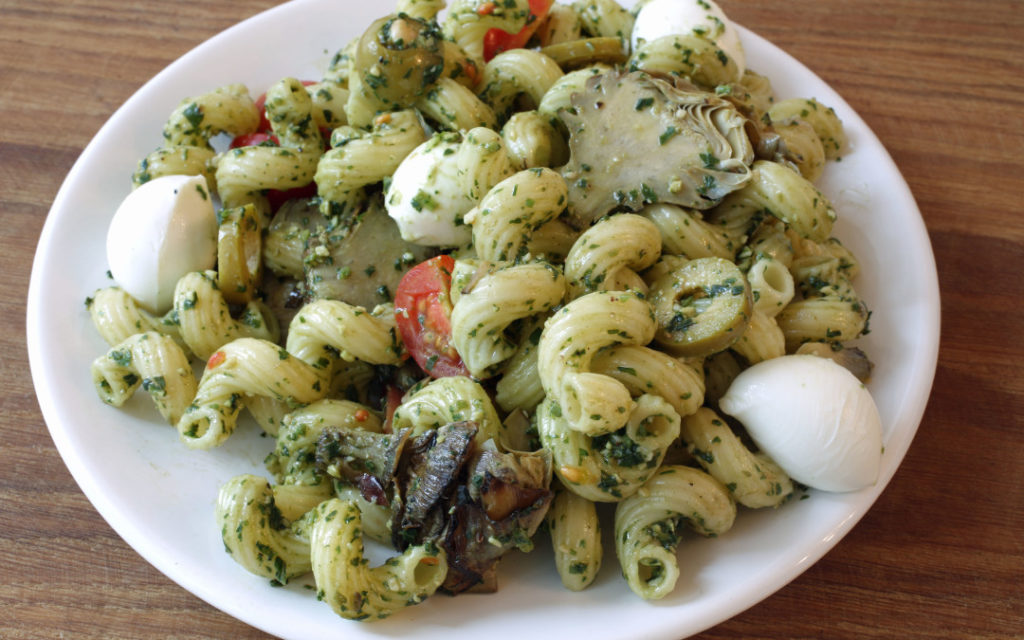
This Post Is Sponsored By PINENUT.COM
In a perfect world, every variety of fresh food would be plentiful and cheap and we’d all be able to eat gourmet style home-cooked meals every single day. And pine nuts would rain down from the skies, providing for endless amounts of delicious garnishes and pesto. Unfortunately we don’t live in a perfect world, and as a result, pine nuts cost an ungodly amount of money. You’d think that given the sheer amount of pine cones in heavily forested areas, there’d be no shortage of these delicious nuts. But there is, and in this look at food industry news, we’re going to find out why something so small could cost upwards of $20 per pound. So without further ado, let’s take a look at the question “why are pine nuts so expensive?”
A Little Bit of Backstory
Pine nuts are an incredibly versatile nut that’s used in many different types of dishes from pastas to cookies to salads. They’re also commonly crushed to make sauces like pesto. Because they have a mild taste and are relatively soft, they make an excellent garnish for all kinds of dishes. Plus, they’re pretty good for you. As far as nuts go, pine nuts are packed to the brim with vitamins and nutrients like protein, iron, beta carotene, vitamin K, vitamin B, and Vitamin E. They’re also a good source of monounsaturated fats.
- Nonstick vegetable oil spray
- 1 cup sugar
- 1/4 cup water
- 2 tablespoons pine nuts
- Spray heavy large baking sheet with vegetable oil spray.
- Stir sugar and water in heavy small saucepan over medium-low heat until sugar dissolves. Increase heat and boil without stirring until syrup turns deep golden, occasionally brushing down sides of pan with pastry brush dipped into water and swirling pan, about 7 minutes.
- Immediately pour out mixture onto prepared baking sheet, sprinkle with pine nuts.
- Working quickly and carefully (mixture is very hot and hardens fast), press tip of knife into edges of caramel sheet and gently stretch in all directions until caramel becomes thin and transparent.
- Cool completely.
- Break brittle into irregular large pieces.
- Brittle can be prepared 3 days ahead. Store in airtight container at room temperature.
Pine nuts do, in fact, come from pine cones, which come from pine trees. If you’ve ever been in a somewhat rural area, you’ve probably noticed that there’s usually no shortage of pine cones – especially in the fall and especially in locations like North America, Europe, and Asia that have dense pine forests. There are two popular varieties of pine nuts in North America, and those are Jumbo Soft Shell Nevada Pinyon and New Mexico Pinon Nut. To find out more about these specific types of pine nuts that you can find in the United States, read this helpful info at PineNut.com.
There are around 35 different varieties of pine cones that produce seeds, but out of those only around eighteen of them produce pine nuts that are worth the hassle of harvesting and take about 18 months to 3 years to mature. “Worth the hassle?”, you say. Yup, and now we’ve finally come to the real reason why pine nuts are so darn expensive. Often when there are poor crops and demand outweighs supply, prices go up. But with pine nuts, the harvesting process is extremely difficult and labor-intensive, hence the high price. If conditions really soured and there was a poor pine cone harvest, we’d see an even higher jump in the cost of pine nuts.
How do you Get to the Center of a Pine Cone?
With the extent of technology these days, it doesn’t seem like popping open a pine cone would be terribly difficult. But with pine nuts, they often still extracted by hand. And it’s not a particularly easy task.
The first step in the harvesting process is to store the pine cones in a burlap bag in a hot, sunny place. This dries out the cone so that it will open and the seeds can be extracted. That part of the process takes about twenty days, on average. Once the cones are dried out, they’re left in the burlap bag and are struck against a hard surface to break the seeds away from the cone. This process is repeated until the cones are shattered. Then, the pine nuts are extracted from the shattered cones in the bag by hand.
To make matters worse, some varieties of pine nuts are covered in an outer shell which has to be removed before processing or eating the pine nuts. That means an additional step in the harvesting process, which means more time and more money involved. All of this work and hassle trickles down to the sale price and keeps the cost of pine nuts extremely high. And unless someone comes up with a brilliant pine nut harvesting robot, the price will likely stay exorbitantly high.
UPDATE: This year’s pine nut harvest in the US yielded a strong crop, so we should see a decrease in the cost of pine nuts. What does that mean? We should stock up, obviously! Need some ideas to use up those pine nuts? Try this fantastic pesto pasta below!
Got some pine nuts that you want to use? Try this delicious recipe for Pesto Pasta for a perfect Fall meal:
- 1/2 lb of pasta like cavatapi, trotolle, fussili or bow ties
- 8 oz of fresh basil
- 1 clove of garlic (or more to taste)
- 1/2 cup of grated parmesan cheese
- 1/2 cup of pine nuts
- 1/3-1/2 cup of olive oil (amount depends on how thick you want it)
- salt and pepper
- 4 oz of mixed olives - black or green (can be stuffed with garlic or almond)
- 1 8 oz jar of artichoke hearts - grilled or marinated
- 1/4 lb of fresh cherry tomatoes
- 10-15 fresh, small mozzarella balls
- Cook the pasta al dente according to the manufacturers instructions. Drain, rinse under cold water and let cool.
- Place the garlic, basil and nuts in the bowl of a food processor. Pulse 10-12 times until fully chopped. Scrape down the bowl. Add the cheese and pulse until the cheese is incorporated. Scrape down the bowl. Add the olive oil and pulse to incorporate. For a very smooth pesto, add the oil while the machine is running. Be careful though as olive oil can sometimes get bitter when it is being whipped in a food processor or blender. Add oil until desired thickness is achieved. The ingredients can also be chopped with a knife and the olive oil added after chopping.
- Season with salt and pepper.
- Slice the olives.
- Slice or quarter the artichoke hearts.
- Cut the tomatoes in quarters.
- Place the cool pasta in a large bowl. Toss with enough pesto to coat, but not so much that it is drowning.
- Add the olives, artichoke hearts and tomatoes. Toss well. Add the mozzarella balls.
- Check and adjust seasoning.
- Serve at room temperature or cold.
- The pine nuts can be changed with walnuts or pecans if budget requires. Toasting the nuts gently in a saute pan before use can bring out extra flavor.
- This recipe makes extra pesto. Freeze the leftover pesto in ice cube trays. When frozen, transfer the cubes to a zip bag. The pesto will keep for a few months.
- For another creamy addition to the salad, add pieces of ripe avocado.








It seems to me that there are ways to increase the supply so that the price can come down. “Pinyon nuts are 28 times more “Earth efficient” in terms of protein production per acre than beef. Four million acres of mature, seed producing pinyon forest was converted to cattle pasture in the years from 1965-1973, with little to no scientific research done to assess impacts (Frazier 2004).” http://pages.uoregon.edu/…/Pine%20Nuts%20Template…
I absolutely love pine nuts with a passion, but as much as I do love the taste of pesto or pasta containing pine nuts, I cannot and will not buy them, purely because of their high price. Nearly £10.00 for 125 grams, they are obviously far more expensive here in the UK (as is everything). I have to say though, I bet you any money you like… the harvesters are not getting paid the big bucks for doing the actual harvesting, I bet you it’s only the greedy, lazy suppliers who are getting the big bucks, without doing the hard work. That wouldn’t surprise me in the least. Hence my own personal boycott.
Hi Lucy! Indeed they are expensive and there does not seem to be any relief in sight! I hope the farmers get there fair share! If I boycott they will certainly be out. It seems like a no win situation. Of course, other nuts can be substituted , but I agree with you pine nuts are so tasty!
Thanks for your comment!
Best Regards,
Matthew
do you know stock symbol for pine nuts
Pinons are very popular here on the NAVAJO NATION USA… My Navajo Tribe pick pinons every year in and around the southwestern United States of America. The hard work on picking pinons is very challenging and it’s not an easy thing to do! Speaking from experience. However, I have sold pinons at £$10.00 per cup! Because of the labor nd travels and energies I put in to bringing pinons to theTABLE!
Also, pinon trees produce seeds only once every four to seven years, depending on rainfall.
Pinon trees produce seeds that appear in the cone and take 18 months to mature. There is an interesting article on theSpruceEats.com.